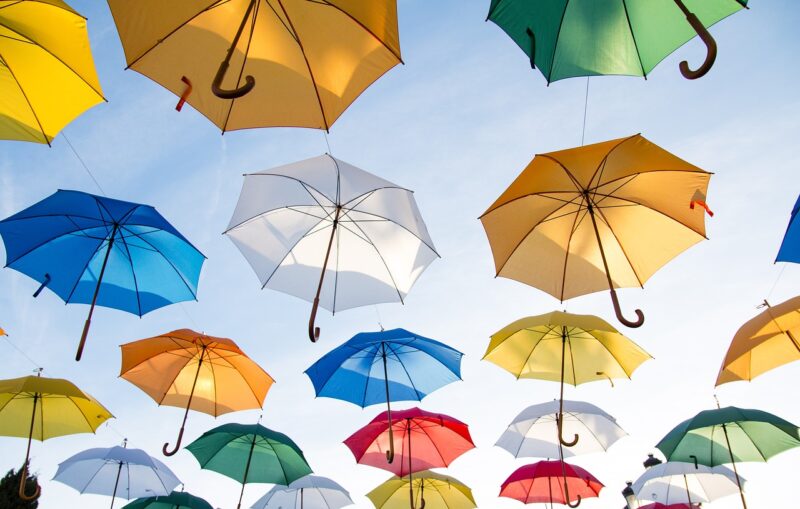The Role of Modern Art in Environmental Activism and Awareness
November 15, 2024

In recent decades, modern art has emerged as a powerful medium for environmental activism and awareness. Artists from various backgrounds are increasingly using their work to address pressing ecological issues, raise public consciousness, and inspire action. This article explores how modern art has become intertwined with environmental activism and its potential to foster a sustainable future.
1. The Intersection of Art and Activism
Art has always been a form of expression and communication, and its role in activism is no exception. Artists have historically used their work to comment on social and political issues, and the environmental crisis is no different. The genre of environmental art has evolved, incorporating contemporary methods and technologies to engage with audiences in new and dynamic ways.
By merging art with activism, artists shed light on environmental challenges such as climate change, pollution, and habitat destruction. They create not just aesthetic experiences but also impactful messages that resonate with individuals passionate about sustainability.
2. Art as a Reflection of Environmental Crisis
Through various forms, such as installations, sculptures, and multimedia projects, modern artists reflect the dire state of our planet and the human-induced changes it faces. Examples of powerful artworks that highlight environmental issues include:
- Christo and Jeanne-Claude’s “The Gates”: This installation in New York’s Central Park was a visual spectacle that provoked dialogue about land use and urban space while also emphasizing the beauty of nature within city life.
- Olafur Eliasson’s “Ice Watch”: This artwork features large ice blocks retrieved from Greenland, which were placed in urban settings to physically remind viewers of the imminent threats of climate change.
- Andy Goldsworthy’s Natural Sculptures: Using natural materials like stones, leaves, and ice, Goldsworthy creates ephemeral artworks that celebrate the beauty of nature while highlighting its fragility.
As these artworks are meant to provoke emotional responses, they motivate audiences to reconsider their relationship with the environment.
3. Modern Art Fuels Ecological Education
Art plays a vital role in education and awareness. Many modern artists use their platforms to educate viewers regarding pressing environmental issues. Through exhibitions, workshops, and social media, they relay critical information and engage the public with the problems at hand.
For instance, institutions like the Museum of Contemporary Art engage audiences with interactive exhibits that explore themes surrounding sustainability, conservation, and biodiversity. Artists collaborate with scientists and environmentalists to create projects that educate and invite participation from the community, making their real environmental impacts evident.
4. Generating Grassroots Movements
The fusion of modern art with environmental activism has led to grassroots movements gaining momentum. Many artists initiate community projects that mobilize people around social and environmental causes. Examples include:
- The Trash Isles Campaign: Initiated by artist and activist David de Rothschild, this project sought to raise awareness about ocean pollution. The campaign aimed to turn the massive accumulation of plastic waste in the ocean into a country, sparking international conversations around waste management and policy changes.
- The Ocean Cleanup Project: Through innovative designs and artful presentations, inventors and artists work together to develop solutions for cleaning plastic waste from the seas, raising significant awareness about oceanic pollution along the way.
Such initiatives not only highlight current environmental crises but also encourage public involvement, demonstrating how art can serve as a catalyst for social change.
5. The Power of Social Media in Art Activism
The rise of social media has changed the game for modern artists engaged in environmental activism. Platforms like Instagram, Twitter, and TikTok allow artists to share their messages with a vast audience, amplify their impact, and reach an international audience far beyond traditional exhibition spaces.
Artists can utilize these platforms to create viral campaigns or share educational content that calls for action. For example:
- Greta Thunberg’s School Strike for Climate: While not an artist herself, Thunberg leveraged art by creating striking visual imagery with her protest signs, catalyzing a youth movement that resonated globally through social media efforts.
- Artivism Projects: Artists who blend art with activism frequently showcase their work through social media, allowing commentary and discussions around environmental issues to flourish in real-time.
This interconnectedness not only raises awareness but also fosters a sense of community around environmental issues, encouraging collective action.
6. Future Directions and Impacts
As we move forward, the role of modern art in environmental activism is poised to become even more critical. Artists will likely continue to explore innovative techniques and technologies, integrating augmented reality, renewable materials, and other sustainable practices into their work to further engage and inspire audiences.
Furthermore, as global awareness around the climate crisis intensifies, we can anticipate a more significant emergence of artist-led initiatives focused on conservation and sustainability efforts.
Ultimately, art’s inherent ability to touch hearts and provoke minds empowers it to play a transformative role in how we understand and engage with environmental issues. By bridging communities, educating individuals, and prompting change, modern art continues to stand at the forefront of environmental activism.
Conclusion
The integration of modern art into environmental activism and awareness signifies an essential collaboration in the contemporary age. As artists wield their creativity to confront ecological crises, they invite audiences to reflect on their roles in the world and the environment. Through compelling visuals, educational initiatives, and communal efforts, they embody the hope for a sustainable future, igniting collective action against environmental degradation.
The conversation around art’s role in activism is ongoing, but its impact on shaping awareness and driving change is unmistakable. By embracing modern art’s power, we can inspire a new generation of environmental stewards, fostering a deep-rooted connection between humanity and the planet we share.







